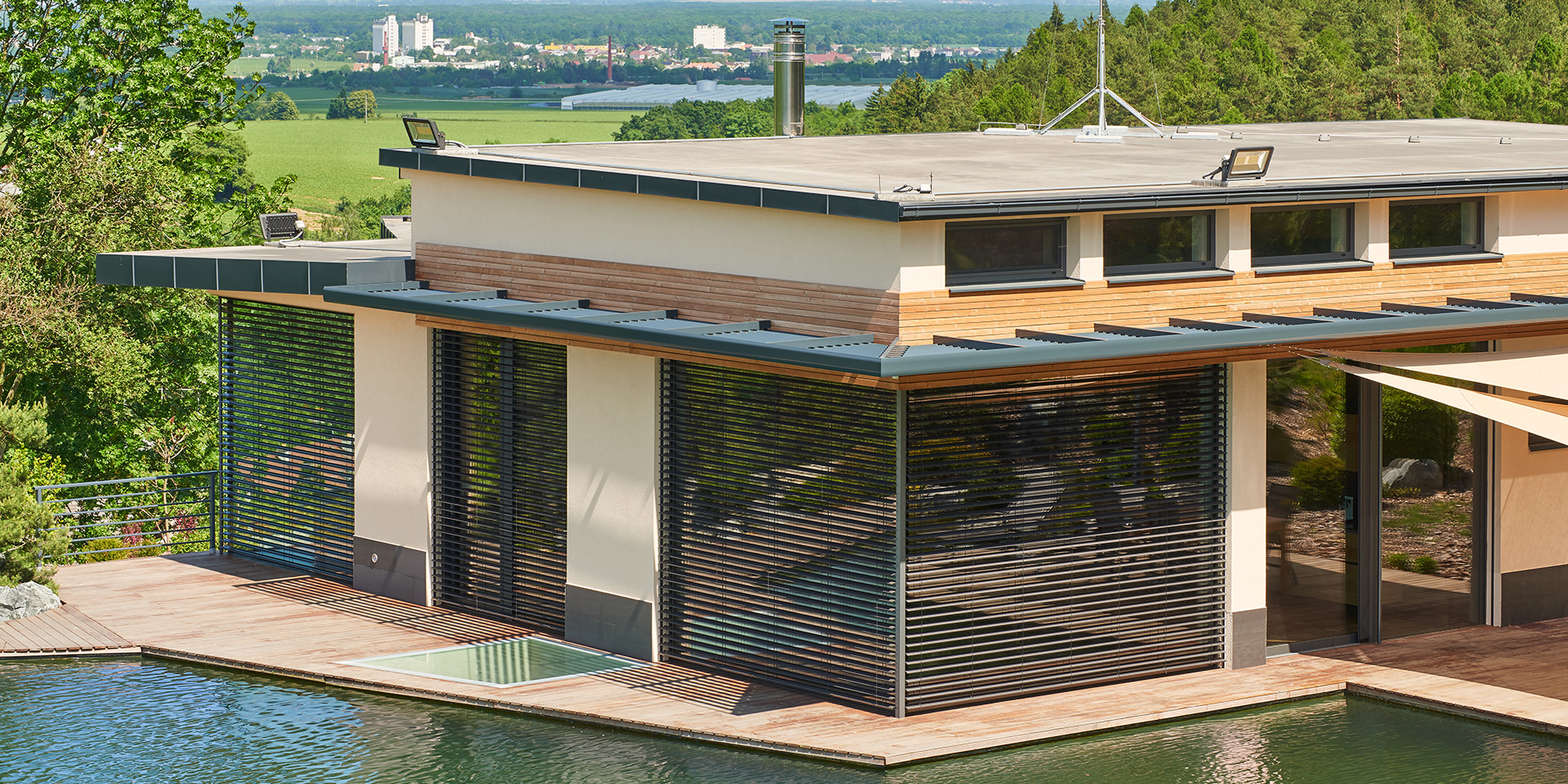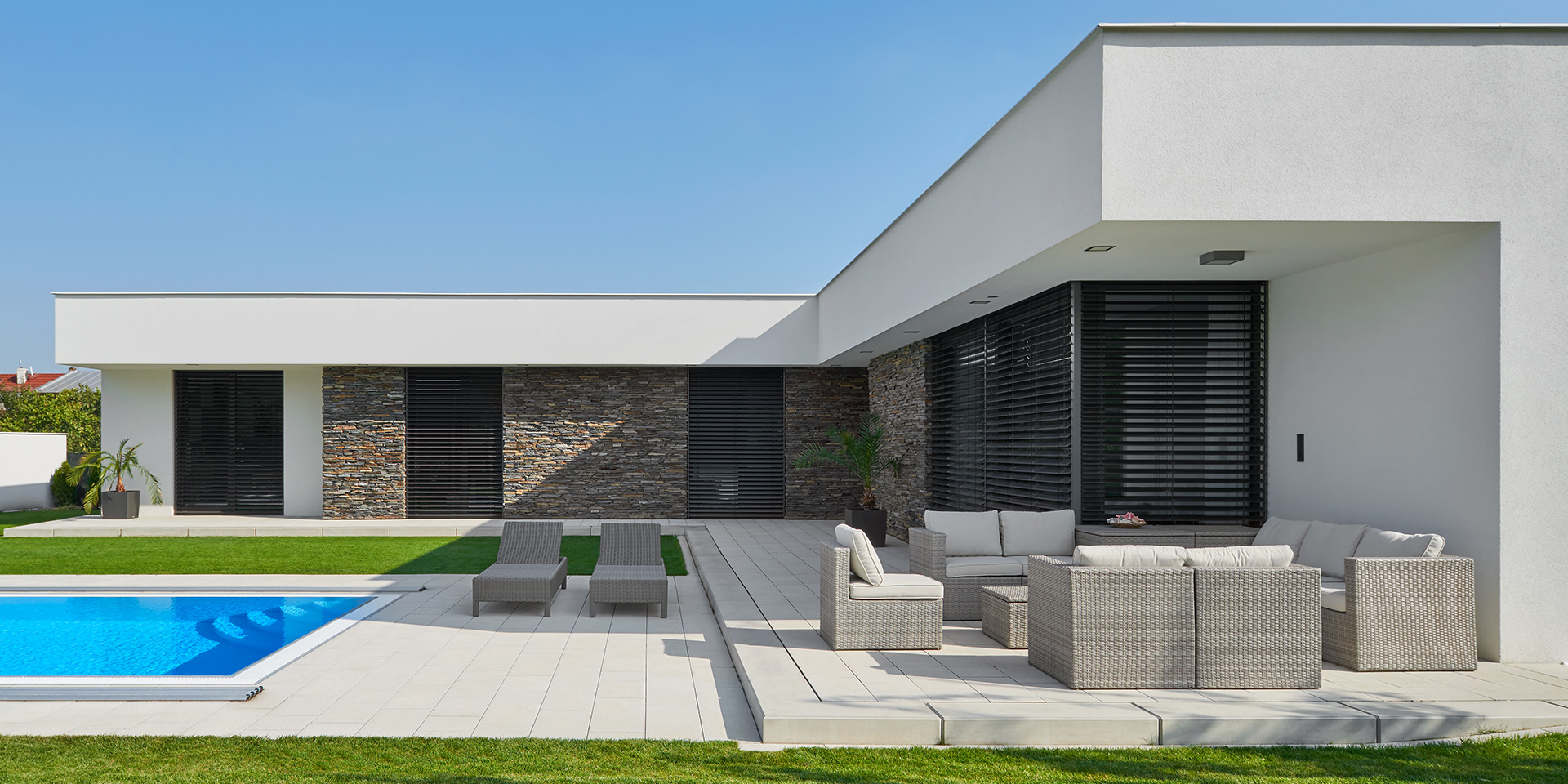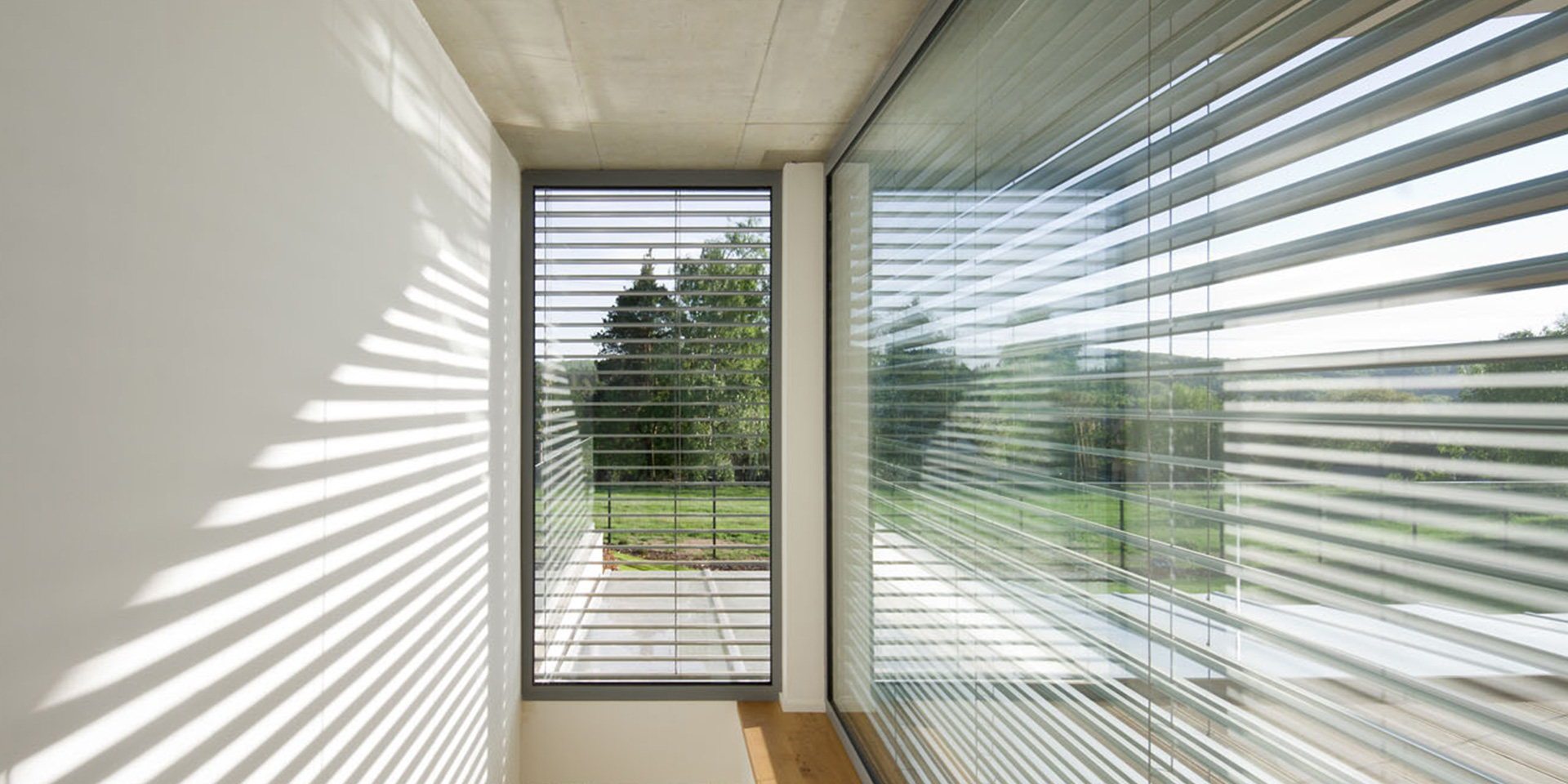Resistance of external blinds: how do they cope with strong wind?
The resistance of external blinds is affected by the slat shape, its width, guiding type and the overall size; but in any case, aluminium external blinds are very resistant and only need to be retracted under extreme conditions, which are rather exceptional.
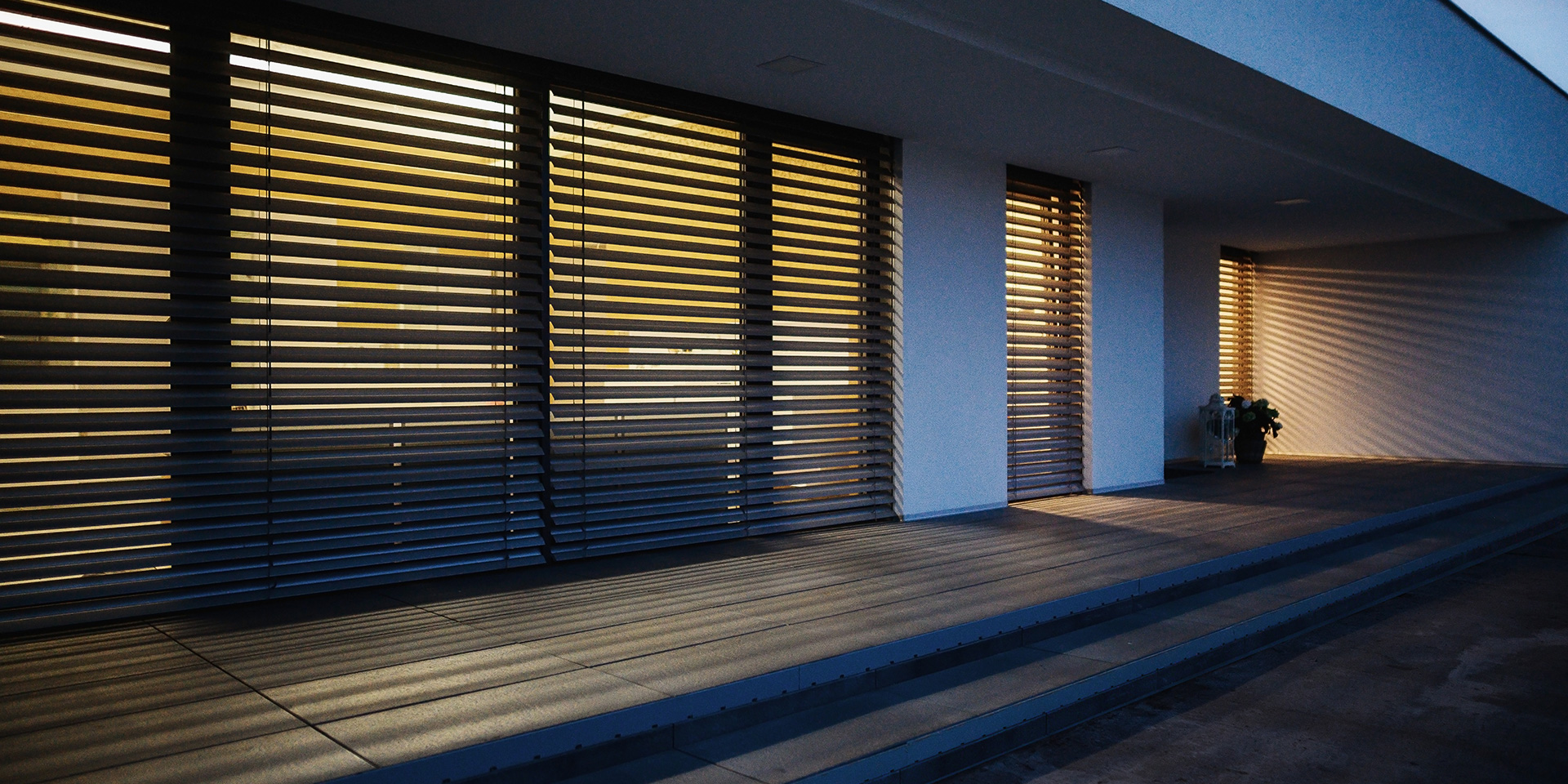
Slat shape: S and Z are the most resistant
The most important factor influencing the resistance of external blinds is the slat shape. F-80 are the most sensitive, followed by C-65 and C-80. In contrast, S (S-90) and Z (Z-90 a Z-70) are the most resistant.
Slat width is the other factor – the wider the slats, the more resistant the blinds are. For example, Z-90 blinds are more resistant than Z-70.
“F-80 blinds are suitable for small windows or places where the building does not allow you to install a significantly large case for the blinds. These slats have smaller packets and therefore take up less space. Similar to all slats, I would recommend wind sensors to make sure the blinds are automatically pulled up in strong wind” says Jan Gajdoš, product manager at NEVA.
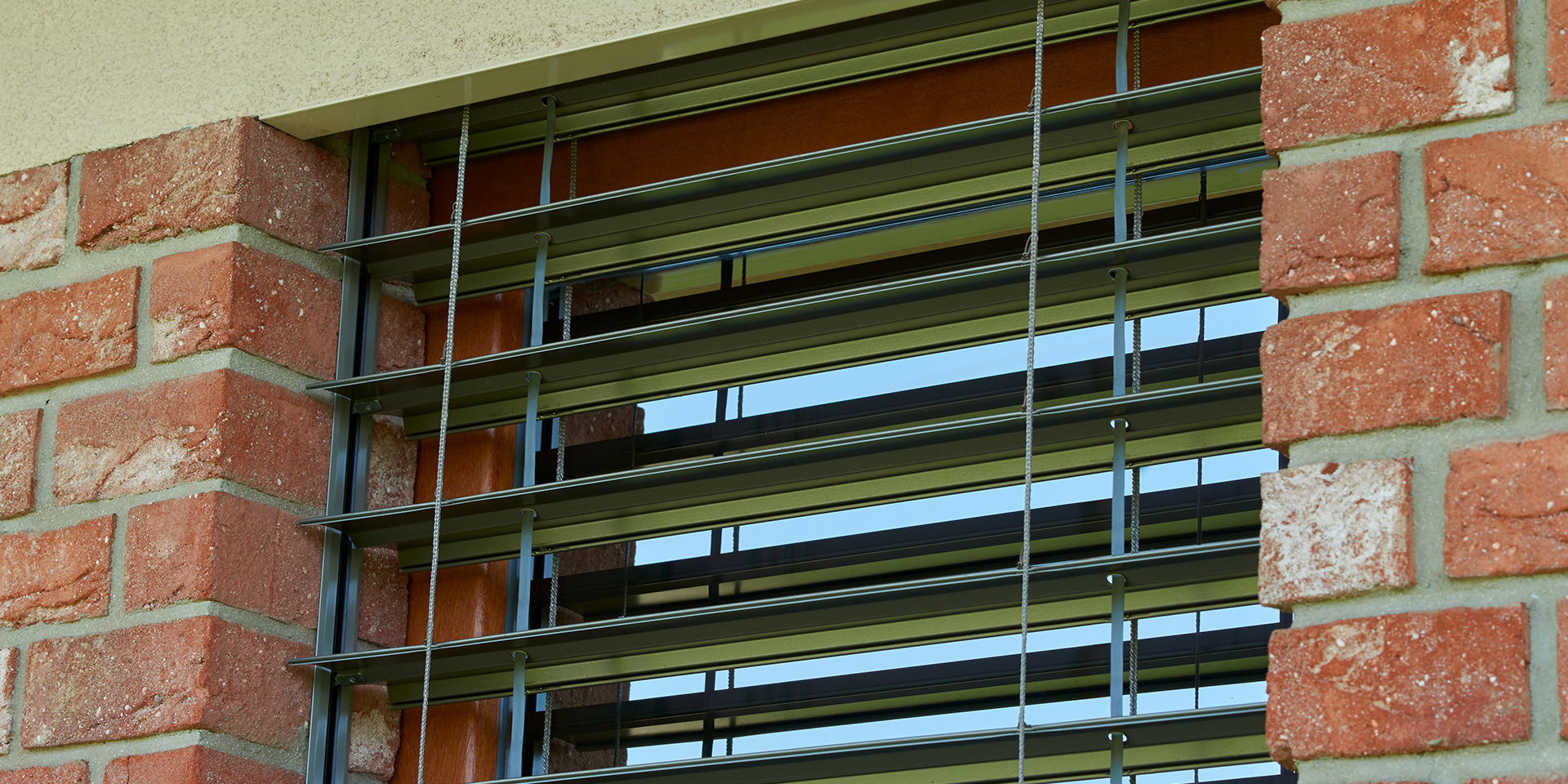
Type Z slats are the most resistant (the picture shows Z-90 in combination with a guiding profile).
Slat guiding: a guiding profile is more resistant
Slat guiding also plays a significant role in the overall resistance of external blinds. Cord guiding is less resistant, while blinds with guiding profiles on the sides can handle even strong gusts of wind.
“Cord guided blinds are really only advisable for areas where only exceptionally does it get windy. In the mountains, at higher elevations and generally wherever it’s plausible, I would recommend a guiding profile variant. Those can resist stronger winds and won’t force you to pull the blinds up all the time,” Gajdoš added.
Resistance is also reduced by the size of the blinds
Additionally, the larger the blinds you have made, the more prone they will be to wind damage. At NEVA for example, we guarantee that Z-90 or S-90 blinds can resist winds up to 88kph, which the Beaufort scale equates to a wind storm capable of tearing chimneys and tiles off roofs. Our blinds still stand though, as long as they are no wider than 1 m.
However, wind resistance decreases proportionally to increasing width.
Sensors and premium motors offer assurance
Almost 100% certainty that your external blinds will not be damaged by wind or hail storms can be ensured by automatic sensors, which detect bad weather that could damage the blinds and automatically pull them up into the case if necessary.
The most common sensors include sun and wind sensors. A rain sensor can also come in handy, detecting rain, snow and hail and pulling the blinds up in time. Blinds should always be up during hail storms, which could damage even the most resistant variants.
To boost the durability of the blinds even further, you can invest in motors with premium features. The most useful features include:
- Obstacle recognition – the motor stops the blind actuation if it hits an obstacle, such as garden furniture leaning against the window.
- Frost protection – if the lower profile of a dropped blind gets covered in snow, the motor will immediately recognize it when raising the blind, stops and loosens the textile strip to release tension. It will also report the error if it’s connected to Smart Home.
“We can’t speak on behalf of other manufacturers, but NEVA have been successfully deploying their blinds in Nordic countries, such as Norway, where they have been handling the rough Scandinavian weather with no issues. While simple sweeping will do in case of mild snowing, you need to avoid handling the blinds altogether if they are frozen or there is a layer of ice on them. I generally recommend having the blinds pulled up when it’s snowing,” says Gajdoš.
“Similarly, we have our blinds tested in Israel, where they’re affected by extremely salty air flowing from the Dead Sea. Even in those conditions ,the durability of our blinds does not suffer, lasting 10 years or more. I believe these are the best evidence of the resilience of external blinds,” Gajdoš concludes.

